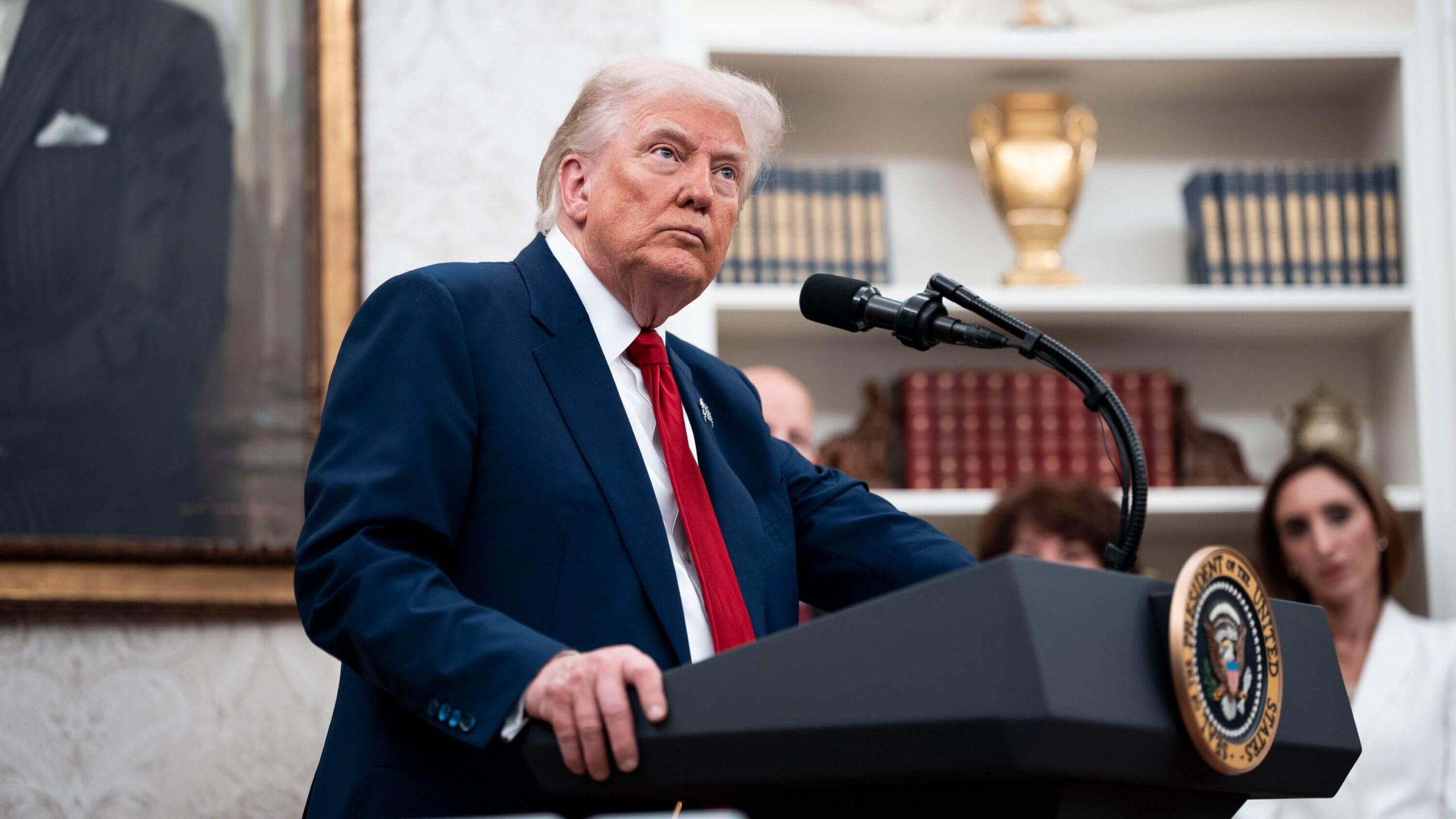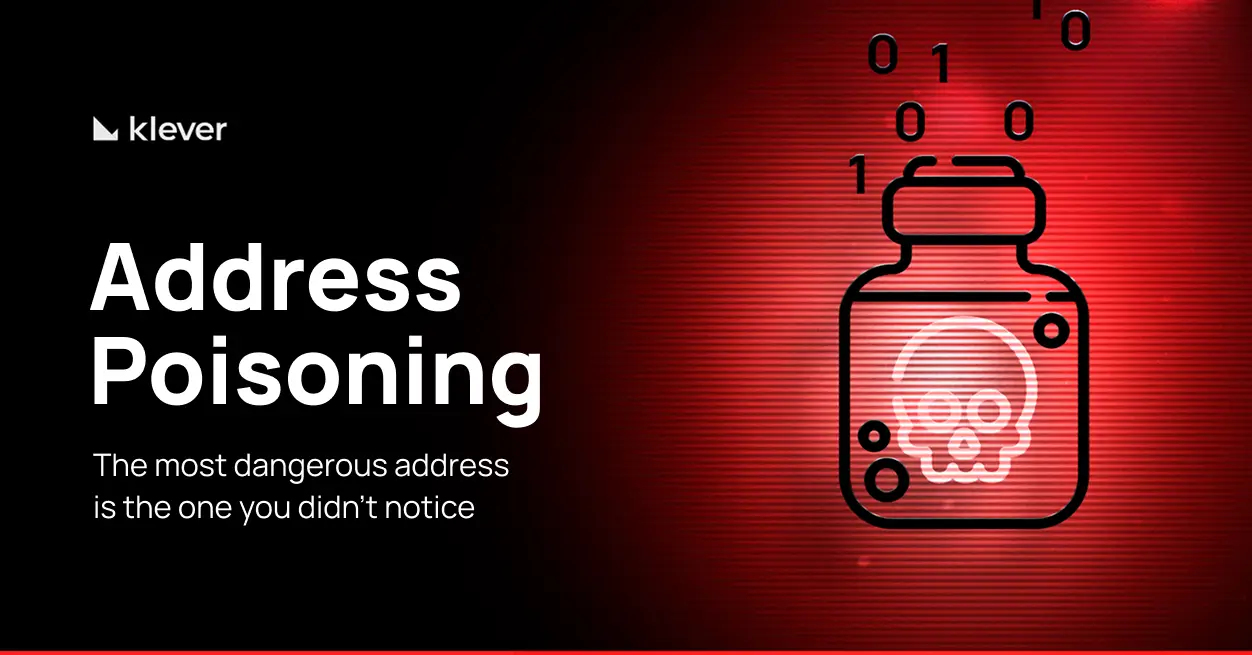
This week was a real test of patience for the crypto market.
Amid persistent declines and mixed signals from the U.S. economy, Bitcoin dropped more than 5% and even traded below $113,000, reflecting the cautious mood ahead of the much-anticipated Jackson Hole symposium.
While investors avoided major moves, crypto funds recorded billion-dollar inflows, Ethereum stood out as the leader in institutional allocations, and BTC mining hit a new record in difficulty — despite falling network fees.
This tense scenario shifted on the 22nd, when Jerome Powell signaled a possible interest rate cut as early as September, turning caution into euphoria and sparking an immediate rally in BTC, ETH, and other altcoins.
Discover everything that shaped this intense week in the crypto market.
Bitcoin Drops to $112K Ahead of Powell’s Jackson Hole Speech

Source: CoinMarketCap
On the morning of August 22, 2025, Bitcoin (BTC) fell to $112,895, down 0.4% on the day and accumulating a -5% decline over the week, according to CoinGecko data. In the Brazilian market, the cryptocurrency was trading around R$619,516.
This move reflects anticipation of Federal Reserve Chair Jerome Powell’s speech at the 2025 Jackson Hole symposium.
Crypto Market Adopts Defensive Stance
Options market data shows that investors are taking a more cautious approach:
The 25 Delta Skew indicator, which measures the difference between puts and calls, still points to mild optimism but has weakened over the past 24 hours.
This suggests traders are less willing to hold risky positions ahead of Powell’s remarks.
James Toledano, COO of Unity Wallet, explained:
“The event risk is high before the Fed Chair’s speech. The stance is likely to remain defensive until the address, when we’ll see whether a new direction emerges or the current status is maintained.”
Jerome Powell at Jackson Hole 2025: Key Takeaways from the Speech

Source: CNN
The Jackson Hole symposium is one of the most influential economic events on the global calendar. It brings together monetary authorities, economists, and investors to debate the direction of global economic policy.
On August 22, 2025, Federal Reserve Chair Jerome Powell delivered a decisive speech that provided clear signals on inflation, the labor market, and U.S. interest rates.
Key Points from Powell’s Speech
Inflation and the Labor Market
Powell highlighted that the U.S. economy is facing two simultaneous risks:
- Persistent inflation, fueled by recently imposed tariffs.
- A slowdown in the labor market, with declines in both demand and supply of jobs.
This scenario places monetary policy at a delicate balance point, where the Fed must decide whether to maintain its restrictive stance or begin interest rate cuts.
Possible Rate Cut in September
One of the most anticipated moments was Powell’s signal that the Federal Reserve may reduce interest rates as early as September 2025.
The weakening job market combined with gradually easing inflation creates room for a shift in policy. Investors quickly priced in a strong likelihood of a rate cut at the meeting scheduled for September 17, 2025.
Review of Monetary Policy Framework
Powell also announced key changes in the Fed’s strategy:
- Ending the average inflation targeting framework, introduced in 2020.
- Implementing a more flexible model, adapted to the post-pandemic landscape and new global economic pressures.
- Reaffirming that all decisions will remain data-driven, safeguarding the Fed’s independence.
Political Pressure and Fed Independence
Powell indirectly addressed pressure from the Trump administration, which had been demanding rate cuts and criticizing central bank members. He emphasized that:
- The Fed will not yield to external pressures.
- Monetary policy will remain based on economic data, not political agendas, ensuring credibility and stability for the U.S. economy.
Impact on the Crypto Market
Powell’s Jackson Hole 2025 speech had an immediate effect on cryptocurrencies.
Bitcoin Jumps Over 4.66%
Right after the speech, Bitcoin (BTC) surged from $111,678 to $114,700 in just 15 minutes. By the end of the day, BTC was trading at $116,878, marking a 4.66% gain.
This move reinforces the perception that lower interest rates increase liquidity and strengthen Bitcoin’s role as an alternative investment asset.
Ethereum Soars 14%
Ethereum (ETH) stole the spotlight, soaring 14.4% in a single day — from $4,215 to $4,820.
The rally reflects investors’ optimism toward the DeFi and smart contract ecosystem, which tends to benefit from greater liquidity.
Altcoins Also Rally Strongly
The surge wasn’t limited to BTC and ETH. Other cryptocurrencies also posted sharp gains:
- XRP: returned to the $3 mark, up more than 6%.
- Solana (SOL): climbed over 6% in less than an hour.
- Dogecoin (DOGE): jumped more than 7% in the same period.
Why Do Rate Cuts Boost Cryptocurrencies?
Expectations of lower U.S. interest rates directly impact the crypto sector because they:
- Increase global liquidity.
- Reduce the attractiveness of traditional investments such as U.S. Treasuries.
- Weaken the dollar’s appeal, driving demand for alternatives like Bitcoin and Ethereum.
Powell’s 2025 Jackson Hole address acted as a trigger for one of the biggest recent rallies in the crypto market. With a possible rate cut in September, cryptocurrencies may be entering a new phase of appreciation if monetary policy does, in fact, shift toward easing.
Trump’s Statements: Fed, Washington D.C., and John Bolton

On August 22, 2025, Donald Trump stated that he would fire Federal Reserve Governor Lisa Cook if she does not resign.
The remark was made during a visit to Washington.
Cook, appointed by Joe Biden, has been criticized over issues related to mortgages in Michigan and Georgia.
Trump reinforced his intention to influence the composition of the Federal Reserve, raising concerns about the institution’s independence.
This stance heightens tensions between the White House and the central bank, especially following Jerome Powell’s speech at Jackson Hole.
$2 Billion Plan to Revitalize Washington D.C.
Trump also announced a $2 billion plan to “beautify” the U.S. capital. The project includes:
- New public lighting
- Street restoration
- Landscaping around the Capitol and the White House
- A visual standard inspired by the Augusta National Golf Club
Critics argue that the project expands federal control over the city, aligning with earlier measures such as intervention in D.C.’s police force.
Trump Comments on FBI Search of John Bolton
That same day, the FBI searched the home and office of John Bolton, former national security advisor and a vocal Trump critic.
Trump said he had not been informed about the operation.
He called Bolton “unpatriotic” and “not smart.”
The investigation involves possible mishandling of classified information.
This statement reinforces the ongoing conflict narrative between Trump and former members of his administration.
The Political Weight of Trump’s Remarks
Trump’s statements on August 22 had repercussions on three fronts:
- Political pressure on the Federal Reserve, risking its independence
- A multibillion-dollar urban project in Washington, strengthening federal presence
- Renewed conflict with John Bolton, reigniting tensions with former allies
These moves show how Trump is consolidating power both in monetary policy and in the management of the federal capital, while maintaining his strategy of confronting critics.
Crypto Funds Record $3.75 Billion in Inflows: 4th Largest in History

Source: Cointelegraph
In the week ending August 15, 2025, cryptocurrency funds saw $3.75 billion in net inflows, marking the fourth largest in history. The surge was driven primarily by the United States, which accounted for 99% of the total.
With this volume, assets under management (AUM) reached $244 billion — the highest ever recorded in the sector.
Ethereum Leads with $2.87 Billion in Inflows
The standout of the week was Ethereum (ETH), which attracted $2.87 billion in inflows, representing 77% of the weekly total.
So far in 2025, ETH has accumulated $11 billion in investments, setting an annual record.
This trend underscores institutional interest in smart contracts, DeFi, and Ethereum-based applications.
Bitcoin Also Draws Investments
Bitcoin (BTC) funds received $552 million during the week.
In 2025, BTC inflows have already reached $21 billion.
However, BTC’s share of total AUM has dropped to 11.6%, while Ethereum now accounts for 29%.
This shift highlights growing institutional diversification, with investors looking beyond Bitcoin.
Solana, XRP, and Other Altcoins
Beyond BTC and ETH, other assets also stood out:
- Solana (SOL): +$176.5 million in inflows
- XRP: +$125.9 million
- Litecoin (LTC): -$0.4 million (outflow)
- Toncoin (TON): -$1 million (outflow)
Regional Breakdown: U.S. Leads by Far
The U.S. dominated allocations with $3.73 billion. Other countries registered smaller contributions:
- Canada: $33.7 million
- Hong Kong: $20.9 million
- Australia: $12.1 million
- Brazil: -$10.6 million (net outflow)
- Sweden: -$49.9 million (net outflow)
Bitcoin Mining Hits Record Difficulty as Fees Plunge

Source: Cointelegraph
In August 2025, the Bitcoin network reached an all-time high in mining difficulty, hitting 129 trillion — a 6.4% increase over the past 90 days. This level was nearly reached in June, when the indicator surpassed 126 trillion.
The network’s automatic adjustment — performed every two weeks — now projects a 0.33% decrease, scheduled for August 22, providing slight relief in energy consumption and computing power requirements.
Miner Revenue in Decline
Even with Bitcoin’s price trending higher, rising difficulty continues to squeeze miners’ profit margins.
Hash price (revenue per petahash/s) fell to around $60, according to BlocksBridge Consulting.
This figure is pressuring mining firms to either improve efficiency or operate at the edge of profitability.
Transaction Fees Collapse
Another critical factor is the drop in Bitcoin transaction fees:
- In July 2025, fees accounted for less than 1% of the total block reward.
This is unprecedented and highlights miners’ growing dependence on block subsidies to sustain operations.
The phenomenon raises concerns about the long-term sustainability of Bitcoin mining — especially with the next halving scheduled for 2028.
Import Tariffs Burden U.S. Miners
On top of shrinking revenue, U.S.-based miners are facing steep import tariffs:
- 57.6% on equipment imported from China
- 21.6% on machines imported from Indonesia, Thailand, and Malaysia
Companies such as CleanSpark and Iris Energy have already been hit with multimillion-dollar charges:
- CleanSpark: $185 million
- Iris Energy: $100 million
Both are contesting the tariffs, which significantly raise operational costs.
Crypto Regulation in 2025: Divergences Between the U.S. and Europe
U.S.: SEC’s Project Crypto Brings Market Clarity
In July 2025, the U.S. Securities and Exchange Commission (SEC) launched Project Crypto, marking a historic shift after years of regulatory uncertainty.
Key points of Project Crypto:
- Clear classification of digital assets: distinction between securities, commodities, stablecoins, and other tokens.
- On-chain custody and trading: new rules enabling secure and transparent blockchain operations.
- Regulated super-apps: potential for platforms integrating trading, staking, lending, and other services under a single license.
- Pragmatic approach: SEC Chair Paul Atkins stated, “the majority of crypto assets are not securities,” emphasizing that regulation will be more flexible and innovation-friendly.
This shift strengthens the U.S.’s position as a crypto innovation hub, reduces risks for businesses, and could attract back companies that had moved to more permissive jurisdictions.
Europe: Digital Euro Gains Priority
In the European Union, the U.S.’s regulatory progress on stablecoins has increased pressure to accelerate the digital euro project.
What’s happening in Europe:
- Response to the digitized dollar: with the USD-backed stablecoin market already surpassing $288 billion, European authorities aim to fast-track the digital euro to preserve competitiveness.
- Technological discussion: beyond private systems, the European Central Bank (ECB) is considering issuing the digital euro on public blockchains like Ethereum and Solana, seeking global interoperability and broader adoption.
- Privacy challenges: debates continue over how to balance transparency, user protection, and compliance with rules such as GDPR.
If implemented on public networks, the digital euro could become the first major CBDC issued on open blockchains.
What to Expect from Crypto Regulation in 2025
- Greater regulatory clarity in the U.S. is likely to boost asset tokenization, institutional investment, and the development of new financial services.
- The acceleration of the digital euro suggests that CBDCs may leverage public infrastructure, creating deeper integration between traditional financial systems and the crypto ecosystem.
The two regions are taking different paths, but both recognize the importance of creating rules that foster innovation without undermining financial security and stability.
Investor Loses $650,000 in Ethereum to Address Poisoning Scam

A crypto investor lost 140 ETH (around R$3.5 million / $650,000) in an attack known as an address poisoning scam. The case occurred on August 14, 2025, and was identified by security analysts at Scam Sniffer.
The incident highlights ongoing security risks in the crypto market and shows how small mistakes can lead to multimillion-dollar losses.
What Is an Address Poisoning Scam?
Address poisoning scam is a technique used by scammers to trick cryptocurrency investors:
- The attacker creates a fake address that looks almost identical to the victim’s.
- This fake address is “injected” into the victim’s wallet history through microtransactions.
- When the user later sends crypto, they might accidentally copy the fraudulent address.
- The funds go directly to the scammer’s wallet, with no way to reverse the transfer.
In this case, the investor copied a spoofed address and unknowingly sent 140 ETH to the criminal.
Why Are These Scams Increasing?
Blockchain experts point to several factors driving the rise of address poisoning attacks:
- Lower network fees: make it cheap for scammers to send numerous microtransactions to fill a victim’s history.
- No fund recovery: unlike traditional banks, blockchain transactions are irreversible.
- Visual similarity: long, complex crypto addresses make it easy to overlook small character changes.
Casa CTO Jameson Lopp noted that these scams have been growing precisely because operating costs for scammers have dropped, making the scheme more profitable.
How to Avoid Address Poisoning Scams
To protect your crypto assets from such attacks, experts recommend:
- Always double-check the first and last digits of an address before confirming a transaction.
- Use saved contacts in your wallet instead of copying and pasting manually.
- Enable security tools such as anti-fraud extensions (Web3 antivirus) that warn against suspicious addresses.
- Use reputable, verified wallets that include built-in protections against scams.
Maximum Security in Crypto Transactions
The case of the investor who lost $650,000 in Ethereum shows how address poisoning scams can target any distracted user. On blockchain, every detail matters — once a transaction is sent, it cannot be undone.
If you manage digital assets, prevention is the only solution: stay alert, verify addresses carefully, and rely on trusted security tools.
Strategy Buys R$280 Million in Bitcoin, Holdings Rise to 629,376 BTC

Strategy, the company led by Michael Saylor, announced the purchase of 430 BTC for $51.4 million (approx. R$280 million). The average price paid was $119,666 per Bitcoin.
With this acquisition, the company’s reserves reached 629,376 BTC, worth about $72.5 billion — cementing its position as the world’s largest institutional holder of Bitcoin.
The funds were raised through the sale of preferred shares, generating over $50 million in net proceeds directed toward Bitcoin purchases. This move reinforces the company’s treasury strategy: making BTC its primary long-term asset.
Unrealized Profit and 2025 Performance
- Historical average purchase price: $73,320 per BTC
- Estimated unrealized profit: around $26.2 billion based on Bitcoin’s current price
- 2025 YTD performance: +25.1%, according to data shared by Michael Saylor on X (formerly Twitter)
These results strengthen the company’s belief that Bitcoin is superior to both the U.S. dollar and gold as a store of value.
Strategy Holds 3% of Total BTC Supply
The latest purchase raised Strategy’s share to roughly 3% of all circulating Bitcoin.
This places the company ahead of giants like Tesla, Coinbase, and Marathon Digital in the institutional race to accumulate BTC.


